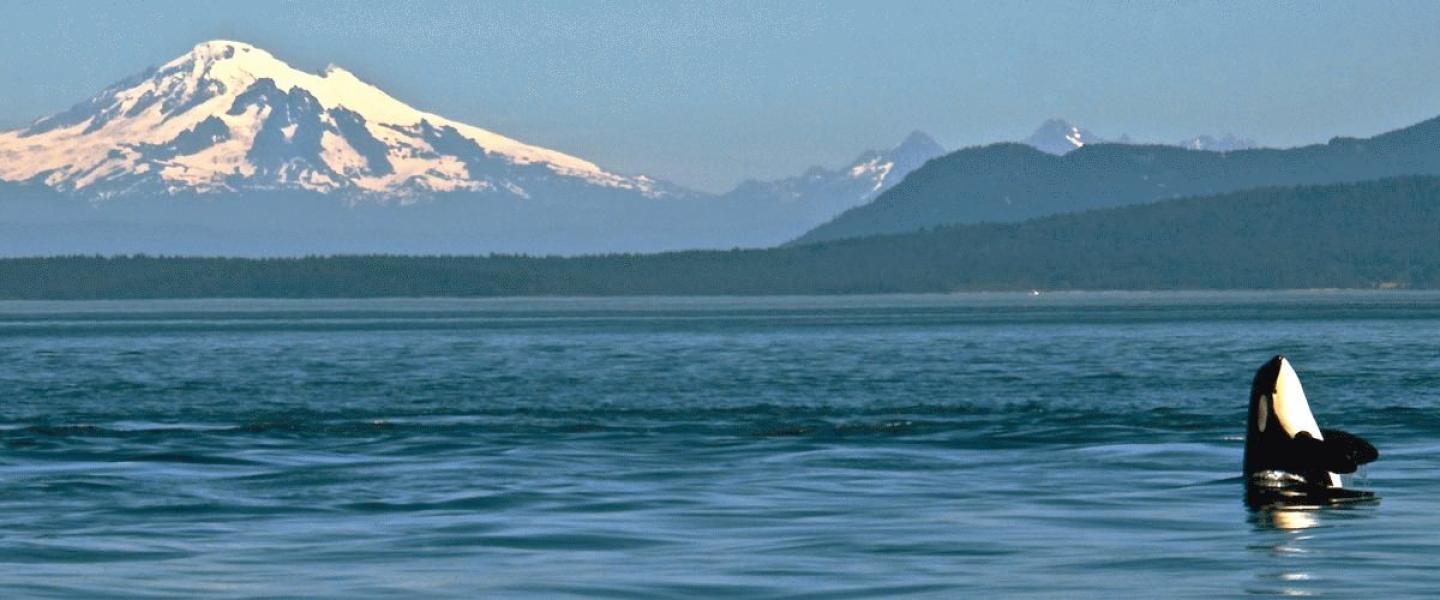
We had a small group today. Only 3 families and it felt like a private charter. I love our small groups even when the days are gray because I can connect to everyone and give people individualized attention. One family from Seattle had two adorable and well behaved girls.
We traveled north, past Speiden Island to Stuart Island. We timidly stuck our nose into Haro Strait along the west side of San Juan Island because we'd heard that the waves were building. They were so large off the west side, the whale watching boats from Victoria had to turn around and go home. Now that I'm back in the office, the winds are rapidly picking up.
One of the families on the tour just bought their first sailboat and are eagerly learning how to sail. The father's first question to me was about currents. He stated his nervousness about sailing in them. It was amazing timing too because right after he asked, before I could even explain it to him, Captain Craig slowed down the boat to let the passengers feel what it was like to drift with them.
In the San Juans on a flood current, millions of gallons of water flood in from the open ocean, through the islands, and into the Strait of Georgia. On an ebb tide, millions of gallons of water ebb from the Strait of Georgia into the open Pacific. I like to describe the area as a giant toilet bowl that flushes 4 times a day.The currents here run in ebbs and flows and are measured in knots. There are usually two ebbs a day and two floods a day. The movement is horizontal like a river, which is why its measured in speed. The currents create the tide, as when millions of gallons of water flood in, the waterline rises and when millions of gallons of water ebb out, it lowers.
Orca Whales and Wildlife Are Our Only Business. ©
San Juan Island near Seattle: Home to the Southern Resident Killer Whales